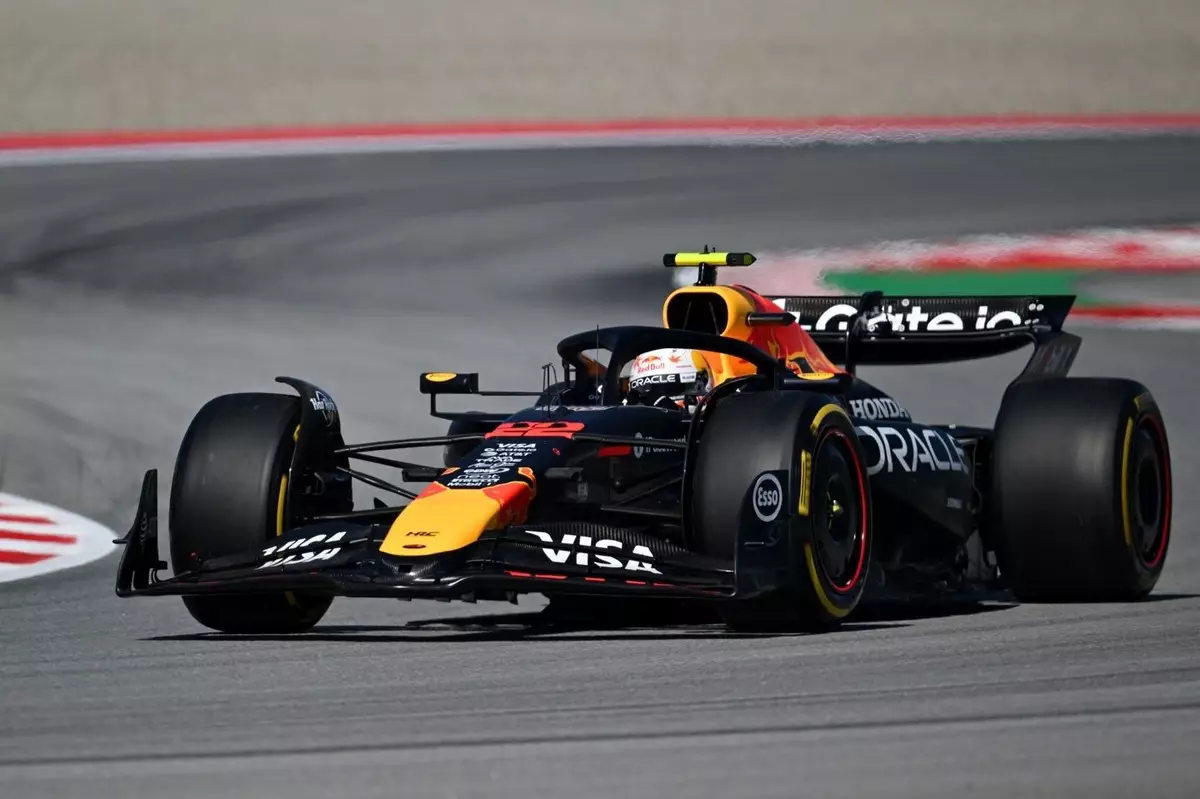Formula 1 is a sport built on precision, and each driver’s performance can often act as a barometer for the team’s overall standing in the championship. Yuki Tsunoda’s frustration during the opening practice sessions at the Spanish Grand Prix brings to light not only his personal challenges but also raises questions about the team dynamics within Red Bull. Despite a smooth day in terms of on-track performance without mechanical issues, Tsunoda found himself grappling with an inexplicable lack of speed, trailing his teammate, Max Verstappen, by six-tenths of a second. Such disparity raises eyebrows, indicating potential underlying problems that need addressing.
Tsunoda has openly stated, “I just don’t have any idea why I am slow.” This candidness demonstrates a level of introspection rarely seen at this level of competition. It shows that even Formula 1 drivers, who are widely considered elite athletes, can experience confusion about their performance. The psychological aspect of racing cannot be underestimated; it can lead to a cascade of doubts and affect one’s concentration.
Dissecting the Practice Sessions
In analyzing the on-track data, the GPS metrics indicate that Tsunoda notably struggles with cornering speeds through critical sectors like Turn 9 and Turn 10, where he is losing time compared to Verstappen. This suggests that while the car may be performing well overall, Tsunoda’s driving style may not be perfectly aligned with the car’s setup. His comments indicate a potential mismatch between his expectations and the car’s current performance, reflecting a broader issue of driver synergy with machine capabilities.
The fact that he mentioned making progress between FP1 and FP2 adds a layer to his situation. While continuous improvement is essential in racing, the key is to identify what causes that elusive gap to remain. Engineers and strategists must dive deep into data analysis to fine-tune the car’s setup specifically for Tsunoda. It appears that there is ample room for adjustments that could help him feel more confident behind the wheel, leading to more competitive lap times.
Comparative Performance and Team Dynamics
On the other hand, Verstappen’s take on his experience during the same sessions reflects a more balanced mindset. His recognition of a “tentative feeling of greater positivity” suggests that while still striving for improvement, he is able to find a silver lining in his performance. Interestingly, Verstappen’s remarks highlight a more strategic approach to his seasons — being thankful for any progress, however slight, rather than lamenting missed opportunities. This outlook could serve as a guide for Tsunoda as he navigates his frustrations.
By comparing the two driver experiences, it becomes apparent that the dynamics within the team could influence both practice performance and morale. Given Verstappen’s status as a four-time world champion, his ability to find a positive spin on less-than-ideal situations could boost team spirit. Tsunoda, on the other hand, may need to consider leveraging his teammate’s experience to seek mentorship on how to find bounce-back strategies effectively.
The Road Ahead: Potential Solutions
With the curfew imposed during race weekends, Tsunoda faces a challenging night ahead as he aims to understand and rectify his performance issues. It’s a pressing test of character and discipline, requiring a balance between intuition and data-driven decision-making. To overcome this hurdle, sustained communication with his engineers is crucial, along with closely analyzing telemetry data to isolate any specific areas for improvement.
A potential avenue could include tailored simulations or practice setups aimed explicitly at addressing the areas where Tsunoda felt unbalanced. The challenge in motorsport is that while teamwork is essential, individual performance often dictates overall success. The pressure on Tsunoda to demonstrate a quick turnaround could serve as a powerful catalyst for growth, pushing him to enhance his adaptability and resilience on the track.
In this ever-globalized sport where every millisecond counts, Tsunoda’s candid expressions of confusion and the subsequent push for clarity may resonate deeply within the racing community. His situation is reminiscent of countless athletes striving for answers — a stark reminder of the mental hurdles that accompany the physical aspects of high-speed competition. It’s in these moments of vulnerability that both the driver and team can take significant steps toward greatness, transforming struggles into the fuel for future successes.

